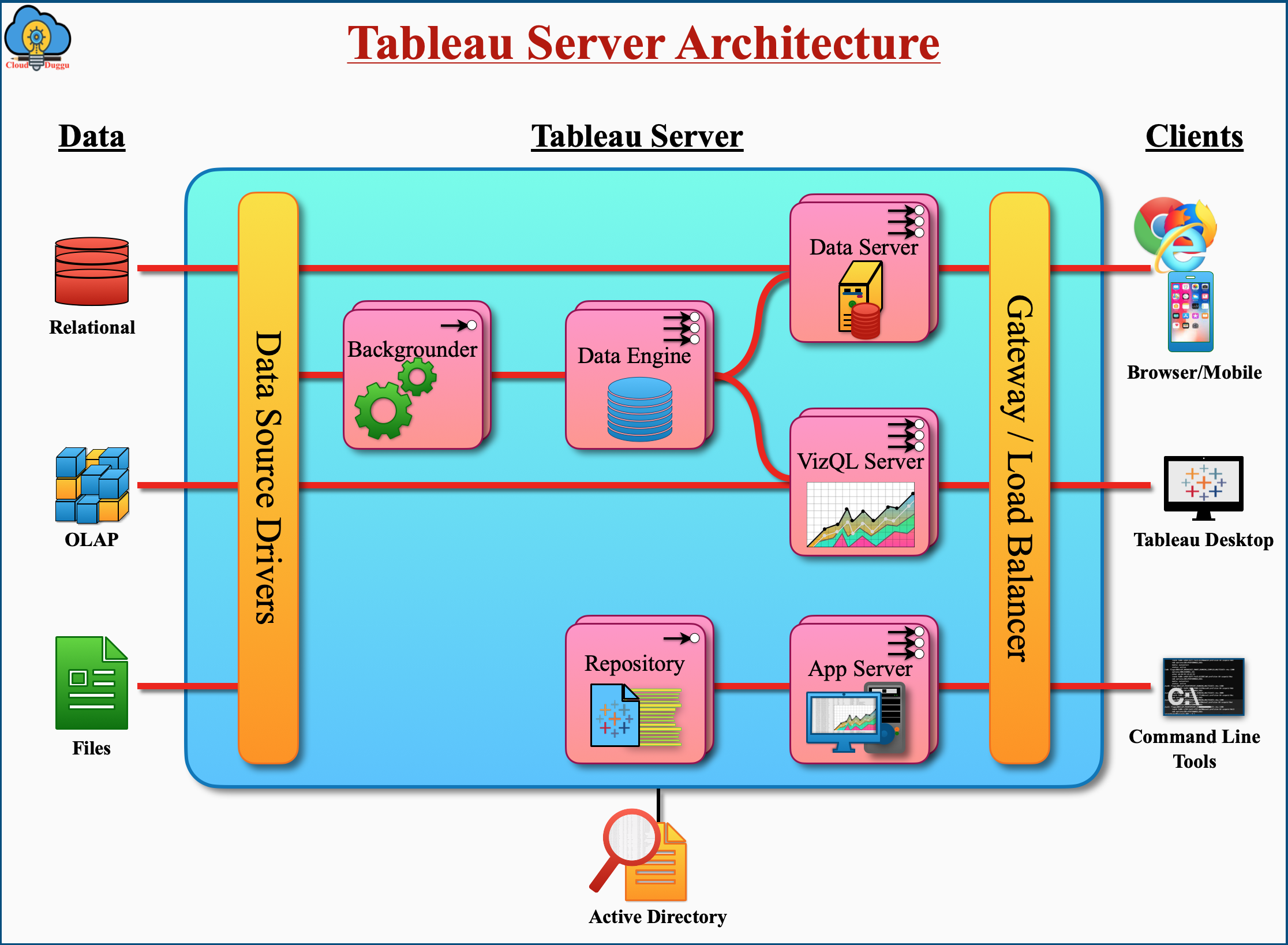Tableau is powerful and features rich Business intelligence tool developed by Tableau Software to perform Visually Data analysis. Tableau can connect with any data source such as Excel, CSV, Oracle, Teradata, SQL Server, DB2, Windows Azure, Google BigQuery, Sources with the ODBC interface, and so on. Tableau takes the raw data as an input and converts it into interactive visual Dashboards to get the insight of the data to make business decisions.
The Tableau Server Architecture has the following components as shown in the below figure.

Tableau Server Components
The Tableau Server Architecture has different components as mentioned in the above figure. In this section, we will go through each component of Tableau Server Architecture in detail.
1. Gateway/Load Balance
The Tableau Server gateway component of Tableau Server is an interface that receives the request from the clients and sends the request to the appropriate component for processing. Once the request processing is completed, it collects the output and sends it to the Clients. The load balancer is a Customised Apache lightweight Web Server that is used to distribute the load on different servers.
2. Application Server
The Application Server component of Tableau Server is used to handle the browsing and searching, web application REST API calls and it performs the content management, searches, and the process of the Virtualization.
3. VizQL Server
The VizQL Server component of Tableau Server is the Visualization engine also called the heart and the mind of Tableau that is used to generate the queries, process and execute queries, and generate the Visualization.
4. Data Server
The Data Server component of Tableau Server Architecture works as a proxy for data sources and provides centralized management of database connection and Tableau Data Extracts. The management of Tableau Data Extracts and database connection is done within the Tableau server and distributed with the workbooks. The users who are using the Tableau Desktop can connect with these Data Extracts and run the required queries.
5. Backgrounder
The Backgrounder component of Tableau Server Architecture has been used to refresh the Tableau extractors, compile the .tde and send it data engine for execution, sync the user, cleanup the TEMP files, and so on.
6. Data Engine
The Data Engine component of Tableau Server is used to store the data extracts and work hand to hand with the backgrounder to process the queries. It is used while creating, refreshing, or querying the extracts.
7. Repository
The Tableau Server Repository is the PostgreSQL database that stores the Tableau metadata and Server detail such as users, groups assignments, data sources, permissions, refreshes information, and the extract information. The Application Server and the VizQL Server talk to the Tableau Server Repository to verify the permission before accessing the views.
8. Search
The Tableau Server Search component is used to perform the fast and filter search. It is based on the Apache SOLR and works with the Application Server component of Tableau Server.
9. Licencing
The Tableau Server Licencing component verifies the registration of users with Tableau under the agreement term.
